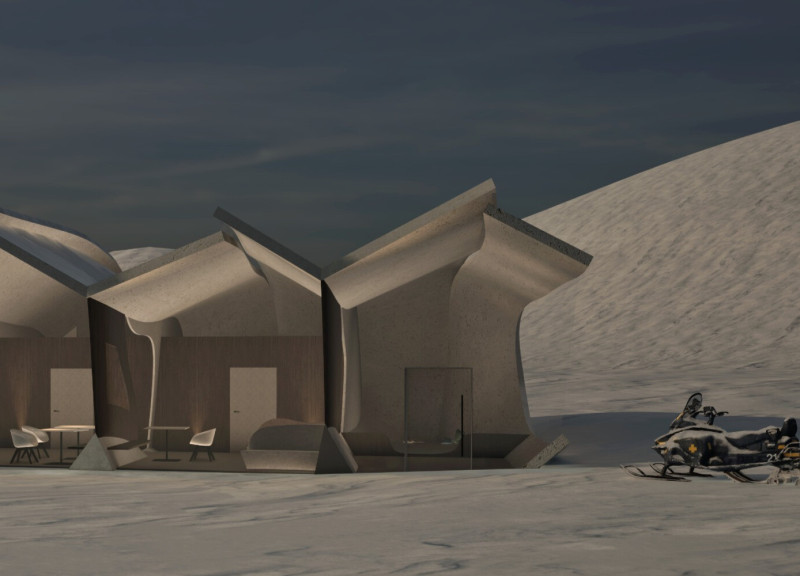5 key facts about this project
At its core, the structure represents a synthesis of innovation and practicality. The design prioritizes functionality while maintaining an aesthetic appeal that resonates with the rhythm of urban life. This project does not merely exist as a standalone entity; instead, it engages with the public realm, encouraging social interactions and fostering a sense of belonging among its users. By incorporating communal spaces, the architecture actively contributes to the dynamics of the neighborhood, creating an inviting atmosphere for both residents and visitors.
A key feature of the design is its clever spatial organization, which allows for seamless movement throughout the building. The layout facilitates a natural flow of circulation, leading visitors from one functional area to another without disruption. Important parts of the project include versatile gathering spaces, which are designed to accommodate various activities—from informal meetings to larger community events. These areas are enhanced by ample natural light, thanks to strategically placed windows and open spaces that connect the indoors with the surrounding landscape. This relationship with nature not only enriches the user experience but also promotes mental well-being.
Materials play a significant role in the overall composition of the project. The selection process emphasizes sustainability and harmony with the environment, featuring locally sourced materials that support the ecological context. The use of [insert specific materials] is significant, as these not only provide durability and functionality but also enhance the aesthetic quality of the building. The textures and colors chosen for the facade work in tandem to create a visually appealing exterior that encourages exploration and engagement from passersby.
The architectural design also incorporates unique approaches to sustainable practices. By utilizing [insert sustainable techniques or materials], the project aims to minimize its environmental impact. Features such as green roofs, rainwater harvesting systems, and energy-efficient systems demonstrate a commitment to sustainable architecture. These elements not only contribute positively to the environment but also serve as educational tools for the community about ecological responsibility.
Moreover, the project embraces innovative technology, seamlessly integrating smart building systems that enhance user comfort and operational efficiency. This forward-thinking approach allows for adaptable spaces that can evolve over time, catering to the changing needs of the community. Each component is meticulously planned to ensure that functionality does not compromise design, reflecting a holistic view of architecture.
In summary, this architectural project stands as a testament to the capacity of design to engage, elevate, and connect. Its thoughtful composition, use of sustainable materials, and innovative approaches render it not only a site of utility but also a vibrant part of the urban fabric. Such a project invites further exploration into its architectural plans and designs, as well as its intricate sections that reveal the layers of thought and care embedded within its creation. For those interested in a deeper understanding of the architectural ideas that have shaped this project, reviewing the detailed presentation will provide valuable insights into the vision that brought this space to life.


























